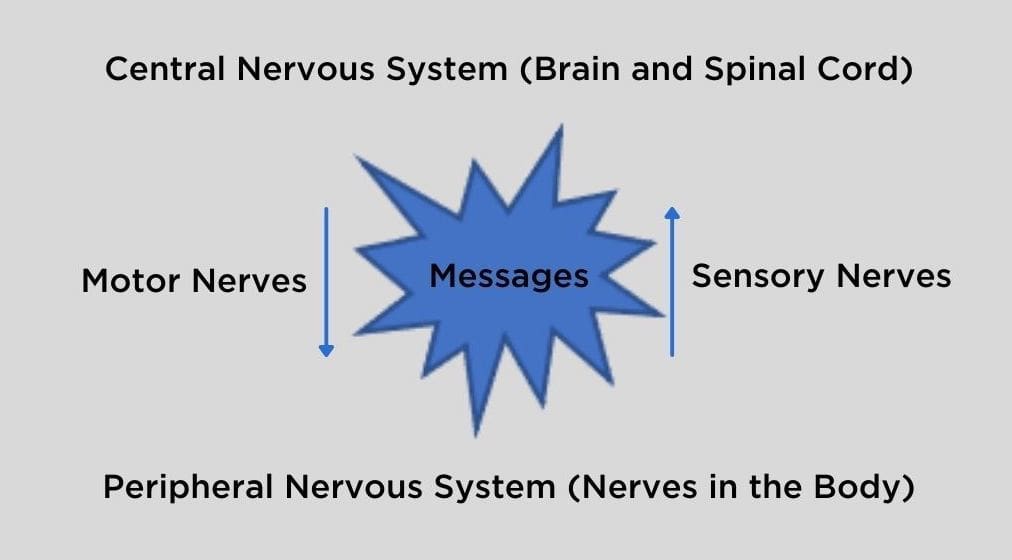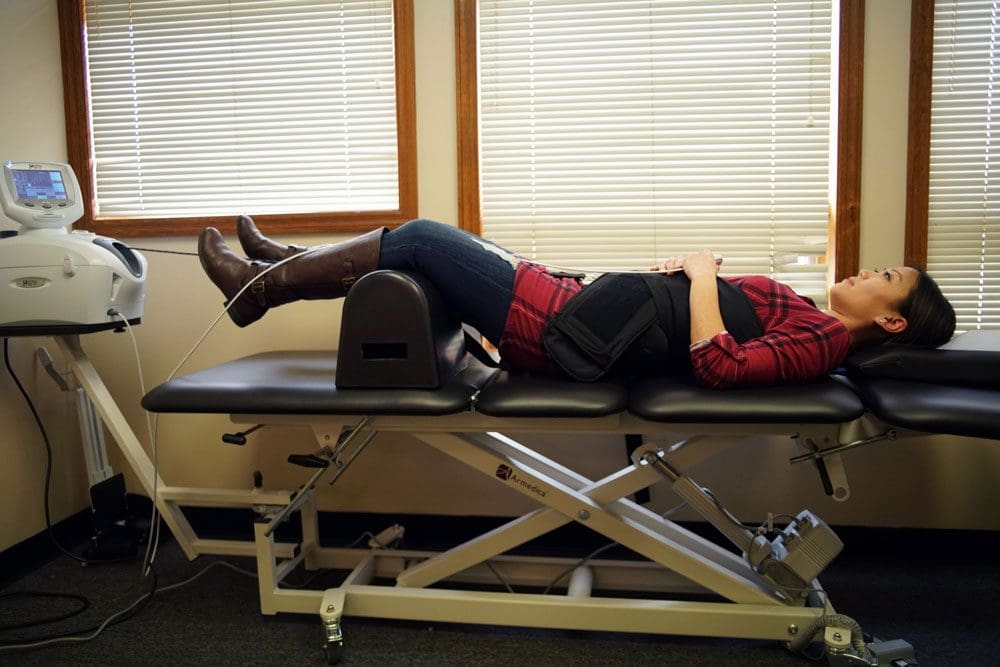Contents
Introduction
The spine is encompassed by ligaments, the spinal cord, nerves, and discs that ensure that the entire body is upright and allow it to move, bend, twist, and turn. The spine also holds parts of the musculoskeletal system as the muscles make sure that the muscles are doing their job correctly. When a person suffers from an injury or a pulled muscle on the back, it can cause unwanted symptoms that can affect the back and affect the entire body. When the spine gets injured, it can also cause many individuals to be in pain, affecting their daily activities. Many treatments can relieve the painful symptoms of back and spinal injury, including spinal decompression. In this article, we will be looking at sensory nerve dysfunction and how the effects of spinal decompression therapy can alleviate sensory nerve dysfunction. By referring patients to qualified and skilled providers specializing in spinal decompression therapy. To that end, and when appropriate, we advise our patients to refer to our associated medical providers based on their examination. We find that education is the key to asking valuable questions to our providers. Dr. Alex Jimenez DC provides this information as an educational service only. Disclaimer
Can my insurance cover it? Yes, it may. If you are uncertain, here is the link to all the insurance providers we cover. If you have any questions, please call Dr. Jimenez at 915-850-0900.
What Is Sensory Nerve Dysfunction?
As part of the central nervous system, the sensory nerves send information from the peripheral nervous system to the spinal cord to the brain. These nerves make sure that the body feels something that a person is touching. When there is an injury affecting the peripheral nerves, it is known as peripheral nerve injury. Research studies have shown that peripheral nerve injury is when there is nerve damage to the body, affecting the brain’s ability to communicate with the muscles and organs. When the sensory nerve becomes damaged from an injury, this will cause many individuals to have a tingling sensation on their hands and feet.
Other research studies have also stated that neuropathic pain can damage the sensory nerve receptor that sends the signals from the spinal cord to the brain. It can cause many symptoms that can be altered and disorder the sensory nerves to develop neuropathic pain symptoms. Since the nerves from the central nervous system send the information from the spinal cord to the entire body, nerve pain damage can disrupt the signals and cause the individual to fall, causing injury to the body, especially on the back. Research studies have shown that many individuals suffering from peripheral nerve damage can result from traumatic injury, metabolic problems, exposure to toxins, and inherited causes that cause the nerve signals to be disrupted.
What Is Spinal Decompression Therapy?-Video
Spinal decompression therapy is a non-surgical treatment that gently stretches the spine using a traction table to relieve back and leg pain. Research studies have found that spinal decompression therapy is used on the spine. It creates a negative intradiscal pressure to retract and reposition herniated or bulging disc material back to its original position in the spine. The gentle stretching from the traction machine allows the nutrients and other beneficial substances to go back to the spine and relieve the painful symptoms that cause injury to the spine. If you want to learn more about spinal decompression therapy, this link will explain the benefits of spinal decompression and how it can alleviate low back pain symptoms.
How Spinal Decompression Can Alleviate Sensory Nerve Dysfunction
The spine is encompassed by ligaments, the spinal cord, and discs that protect the spine from injury. When the spinal disc gets injured or naturally wears and tears due to age, it can cause the disc to lose the fluid that makes them sponge-like and compressed. When there is compression on the spinal disc, it can cause pain in the back. There is no pain when there is compression on the peripheral nerves unless the peripheral nerves have been irritated or pinched earlier. There are therapeutic treatments that can help alleviate the painful symptoms caused by the pinched nerves and bring back a person’s quality of life.
Research studies have found that ice treatments, electric treatments, and spinal decompression therapy allow individuals to get back their quality of life to about 90%. Since spinal decompression has a direct mechanical effect and a biochemical effect, the gentle traction will allow the intradiscal pressure from the damaged nerves to be reduced and retract the herniated disc. Spinal decompression therapy can influence sensory nerve dysfunction and restore motor functions in the body. Other research studies have also found that stretching, infrared radiation, and spinal decompression traction can significantly improve the pain and disability levels that are causing the individual pain in their lower back. Spinal decompression therapy will even alter the biomechanics and biochemistry of the spinal disc and nerve root, causing many individuals relief.
Conclusion
Therefore, the spine’s primary function is to make sure that the body can twist, bend, turn, and stay upright. When the back gets injured from a pulled muscle or an accident, it can immobilize the individual and disrupt their quality of life. If there is nerve damage from the injury, it can disrupt the nerve signals in the brain and cause the individual to lose balance and injure themselves even more. Utilizing non-surgical treatments like ice treatments, stretching, and physical therapy with the combination of spinal decompression therapy can help restore the back by gently stretching the spine with a traction table and restoring the lost nutrients of the spinal disc as well as restoring the motor and sensory nerve functions to the body.
References
Alrwaily, Muhammad, et al. “Assessment of Variability in Traction Interventions for Patients with Low Back Pain: A Systematic Review.” Chiropractic & Manual Therapies, BioMed Central, 17 Sept. 2018, https://www.ncbi.nlm.nih.gov/pmc/articles/PMC6139896/.
Colloca, Luana, et al. “Neuropathic Pain.” Nature Reviews. Disease Primers, U.S. National Library of Medicine, 16 Feb. 2017, https://www.ncbi.nlm.nih.gov/pmc/articles/PMC5371025/.
Daniel, Dwain M. “Non-Surgical Spinal Decompression Therapy: Does the Scientific Literature Support Efficacy Claims Made in the Advertising Media?” Chiropractic & Osteopathy, BioMed Central, 18 May 2007, https://www.ncbi.nlm.nih.gov/pmc/articles/PMC1887522/.
Staff, Mayo Clinic. “Peripheral Nerve Injuries.” Mayo Clinic, Mayo Foundation for Medical Education and Research, 17 Apr. 2020, https://www.mayoclinic.org/diseases-conditions/peripheral-nerve-injuries/symptoms-causes/syc-20355631.
Staff, Mayo Clinic. “Peripheral Neuropathy.” Mayo Clinic, Mayo Foundation for Medical Education and Research, 3 July 2021, https://www.mayoclinic.org/diseases-conditions/peripheral-neuropathy/symptoms-causes/syc-20352061.
Disclaimer
General Disclaimer, Licenses and Board Certifications *
Professional Scope of Practice *
The information herein on "Treating Sensory Nerve Dysfunction With Spinal Decompression" is not intended to replace a one-on-one relationship with a qualified health care professional or licensed physician and is not medical advice. We encourage you to make healthcare decisions based on your research and partnership with a qualified healthcare professional.
Blog Information & Scope Discussions
Welcome to El Paso's Premier Wellness and Injury Care Clinic & Wellness Blog, where Dr. Alex Jimenez, DC, FNP-C, a Multi-State board-certified Family Practice Nurse Practitioner (FNP-BC) and Chiropractor (DC), presents insights on how our multidisciplinary team is dedicated to holistic healing and personalized care. Our practice aligns with evidence-based treatment protocols inspired by integrative medicine principles, similar to those on this site and on our family practice-based chiromed.com site, focusing on naturally restoring health for patients of all ages.
Our areas of multidisciplinary practice include Wellness & Nutrition, Chronic Pain, Personal Injury, Auto Accident Care, Work Injuries, Back Injury, Low Back Pain, Neck Pain, Migraine Headaches, Sports Injuries, Severe Sciatica, Scoliosis, Complex Herniated Discs, Fibromyalgia, Chronic Pain, Complex Injuries, Stress Management, Functional Medicine Treatments, and in-scope care protocols.
Our information scope is multidisciplinary, focusing on musculoskeletal and physical medicine, wellness, contributing etiological viscerosomatic disturbances within clinical presentations, associated somato-visceral reflex clinical dynamics, subluxation complexes, sensitive health issues, and functional medicine articles, topics, and discussions.
We provide and present clinical collaboration with specialists from various disciplines. Each specialist is governed by their professional scope of practice and their jurisdiction of licensure. We use functional health & wellness protocols to treat and support care for musculoskeletal injuries or disorders.
Our videos, posts, topics, and insights address clinical matters and issues that are directly or indirectly related to our clinical scope of practice.
Our office has made a reasonable effort to provide supportive citations and has identified relevant research studies that support our posts. We provide copies of supporting research studies upon request to regulatory boards and the public.
We understand that we cover matters that require an additional explanation of how they may assist in a particular care plan or treatment protocol; therefore, to discuss the subject matter above further, please feel free to ask Dr. Alex Jimenez, DC, APRN, FNP-BC, or contact us at 915-850-0900.
We are here to help you and your family.
Blessings
Dr. Alex Jimenez DC, MSACP, APRN, FNP-BC*, CCST, IFMCP, CFMP, ATN
email: coach@elpasofunctionalmedicine.com
Multidisciplinary Licensing & Board Certifications:
Licensed as a Doctor of Chiropractic (DC) in Texas & New Mexico*
Texas DC License #: TX5807, Verified: TX5807
New Mexico DC License #: NM-DC2182, Verified: NM-DC2182
Multi-State Advanced Practice Registered Nurse (APRN*) in Texas & Multi-States
Multi-state Compact APRN License by Endorsement (42 States)
Texas APRN License #: 1191402, Verified: 1191402 *
Florida APRN License #: 11043890, Verified: APRN11043890 *
License Verification Link: Nursys License Verifier
* Prescriptive Authority Authorized
ANCC FNP-BC: Board Certified Nurse Practitioner*
Compact Status: Multi-State License: Authorized to Practice in 40 States*
Graduate with Honors: ICHS: MSN-FNP (Family Nurse Practitioner Program)
Degree Granted. Master's in Family Practice MSN Diploma (Cum Laude)
Dr. Alex Jimenez, DC, APRN, FNP-BC*, CFMP, IFMCP, ATN, CCST
My Digital Business Card
Licenses and Board Certifications:
DC: Doctor of Chiropractic
APRNP: Advanced Practice Registered Nurse
FNP-BC: Family Practice Specialization (Multi-State Board Certified)
RN: Registered Nurse (Multi-State Compact License)
CFMP: Certified Functional Medicine Provider
MSN-FNP: Master of Science in Family Practice Medicine
MSACP: Master of Science in Advanced Clinical Practice
IFMCP: Institute of Functional Medicine
CCST: Certified Chiropractic Spinal Trauma
ATN: Advanced Translational Neutrogenomics
Memberships & Associations:
TCA: Texas Chiropractic Association: Member ID: 104311
AANP: American Association of Nurse Practitioners: Member ID: 2198960
ANA: American Nurse Association: Member ID: 06458222 (District TX01)
TNA: Texas Nurse Association: Member ID: 06458222
NPI: 1205907805
| Primary Taxonomy | Selected Taxonomy | State | License Number |
|---|---|---|---|
| No | 111N00000X - Chiropractor | NM | DC2182 |
| Yes | 111N00000X - Chiropractor | TX | DC5807 |
| Yes | 363LF0000X - Nurse Practitioner - Family | TX | 1191402 |
| Yes | 363LF0000X - Nurse Practitioner - Family | FL | 11043890 |










